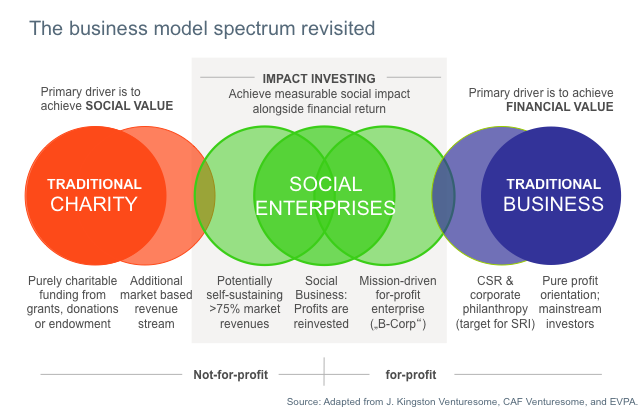Balancing Exercises for Social Enterprises
Business leaders are often asked to balance a number of considerations when making decisions for their company. Often these considerations are in direct conflict with each other, though they are not usually both core aspects of the company's mission, in which case, the director can easily defer to the consideration which is less central to the company's identity.
The most obvious example is where a company needs to weigh a business decision where the conflicting goals are profit maximization for shareholders versus contributing to the general public welfare. Many companies are agnostic as to how their company should proceed in such a situation, and directors will often choose the option which maximizes profits.
In contrast to a traditional company which is agnostic on these issues, social enterprises must often make decisions which strike a balance between two competing forces which are both central to the company's identity or purpose. These types of balancing exercises can arise in a number of different ways and will be informed by each company's particular philosophy and legal organization.
Balancing between Profitability and Public Benefits
The most obvious area of conflict which requires regular balancing exercises for social enterprises would be the amount of resources (capital, labor, time, etc) to devote to making the company profitable versus providing a public benefit.
This could involve choices between allocating capital towards further investment versus donating it to a mission. But it could also arise when deciding how to allocate employee time - eg providing pro bono services versus revenue generating services.
It could also arise when considering how to devise a marketing campaign - eg should the company devote resources to public awareness efforts tied to their core mission or should they focus more heavily on marketing the company's products.
A key consideration when performing this balancing exercise is the type of entity which was formed. There is a spectrum of different entity types based on how central profit or purpose is to their company mission, and where an organization falls within this spectrum may help determine the appropriate choice.
For example, if your company is a non-profit, the answer might be relatively straightforward. Although even in this case, there are arguments which can be made that in some instances maximizing revenue/profits in the short term will allow for the non-profit organization to pursue an even more ambitious agenda in the long term.
There are even differences between social enterprises (or hybrid companies). For instance, a Low-Profit Limited Liability Company (or LC3) may be further along the spectrum in valuing benefit over profits than a traditional benefit corporation.
The type of entity may therefore inform the decisionmaker’s balancing exercise.
Balancing between Various Stakeholders
A social enterprise is often required to make decisions which balance the interests of various stakeholders.
The most readily apparent example would be balancing between allocating resources to the benefit of shareholders versus other stakeholders such as employees, suppliers or consumers.
Another interesting balancing situation would be between suppliers and consumers. For example, consider a social enterprise where alleviating global poverty is a key goal of the business, and in connection with this it pays above-market prices to its suppliers. But it also provides a product which is aimed at an economically-vulnerable demographic and aims to keep the price of its products as low as possible. If this is the case, the company's decision-makers would need to balance how much to devote to paying its suppliers a high wage versus how much to reduce the price of its product to benefit its consumers.
Conclusion
There is a growing trend where companies are taking on the challenge of providing a social benefit while also building a successful business. In do so, they are asking that their decision makers undertake novel balancing exercises in trying maximize a double (or triple) bottom line. It is, therefore, incumbent upon legal practitioners who work in this exciting new field to also be flexible and creative when providing legal guidance to social enterprise decision makers.
While it may be difficult to navigate this novel territory, I am hopeful that this generation of leaders is up to the challenge!
Disclaimer: The information in this article is provided for informational purposes only. You should consult with an attorney before you rely on this information. This information should not be seen as legal advice and does not create an attorney-client relationship. This article is meant to be a general discussion and may not include all relevant information regarding the issues covered.

